Kyoto Travel Itineraries: Enjoy Great Attractions and Tasty Cuisine

We introduce half-day, two-day, and three-day travel itineraries for Kyoto focusing on top attractions such as Kiyomizudera Temple, Fushimi Inari Shrine, and Arashiyama.
Kyoto Itineraries: Enjoy Temples and World Heritage Sites
Kyoto, Japan's historic capital, is home to 17 temples and shrines that have been registered as Historic Monuments of Ancient Kyoto, a UNESCO World Heritage Site.
Scenic spots such as Arashiyama and Sagano are also highly popular among international and domestic visitors, and the nearby areas are lined with countless souvenir shops and restaurants.
This article introduces half-day, two-day, and three-day travel itineraries for Kyoto―one of Japan's most popular travel destinations.
Kyoto Travel Itineraries
1. Half-Day Itinerary in Kyoto: Enjoy Kyoto Architecture and Cultural Assets
2. Two-Day Itinerary in Kyoto: Visit Kyoto's Main Attractions
3. Three-Day Itinerary in Kyoto: Arashiyama, Temples, Shrines, and Food Sampling
Half-Day Itinerary in Kyoto: Enjoy Kyoto Architecture and Cultural Assets
In Kyoto, a city with innumerable highlights and famous sightseeing spots, it's somewhat challenging to arrange a half-day travel itinerary.
However, if it's simply not possible to have more available time, then we do have a recommended travel plan. Timewise it's not far from Kyoto Station, yet you can still soak up Kyoto's atmosphere and even enjoy some local cuisine before heading back.
On this itinerary, we'll explore the Kiyomizudera Temple area from early morning until mid-morning. Then, in the afternoon, we'll visit Fushimi Inari Taisha Shrine and also enjoy some food sampling in the nearby area.
Morning: Kiyomizudera Temple Area
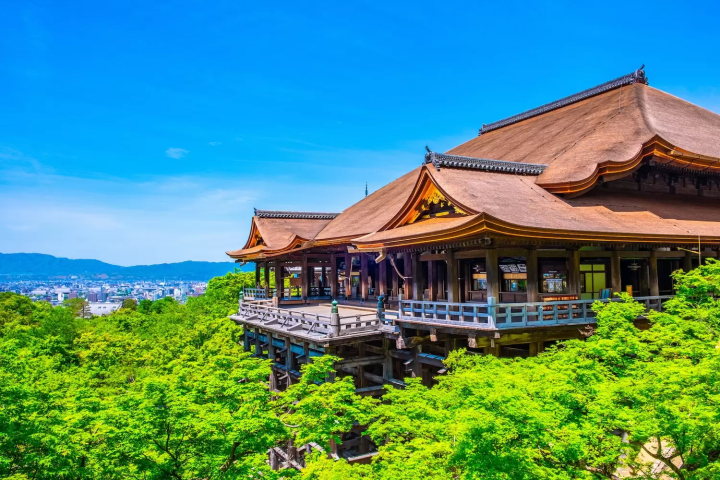
Photo by Pixta
Kiyomizudera Temple is one of Kyoto's main sightseeing attractions. Among temples and shrines in Japan, it was registered as a UNESCO World Heritage Site after Horyu-ji Temple, and is the head temple of the Kita-Hosso Buddhist sect.
To get here take a city bus from Kyoto Station (about 20 minutes) and disembark at Kiyomizu-michi bus stop.
The approach leading to Kiyomizudera Temple is lined on both sides with many shops. It's an area bustling with students on school trips and also visitors―both domestic and international. Please keep in mind that the temple gates open early at 6:00.
If you want to take your time and see cultural assets such as the main building (Hondo), Nio gate (Nio-mon), West gate (Sai-mon) and three-story pagoda, then the best time to visit is early in the morning. You'll be able to enjoy the peaceful, tranquil atmosphere that's so characteristic of Kyoto.
Afternoon: Fushimi Inari Taisha Shrine and Nearby Area
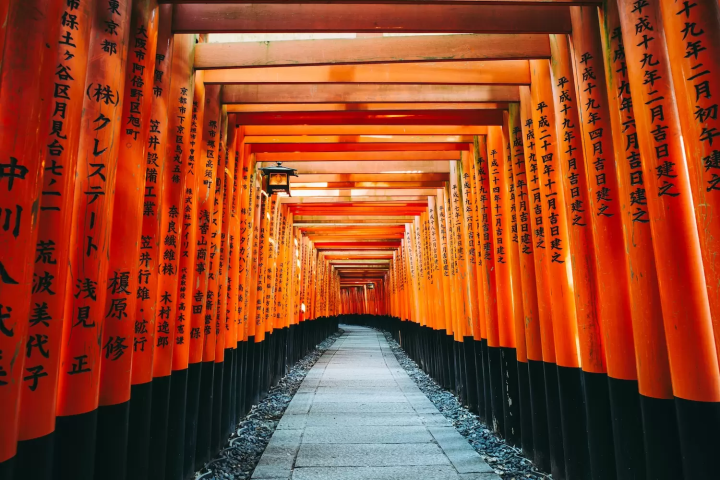
Photo by Pixta
Fushimi Inari Taisha Shrine is about one hour on foot from Kiyomizudera Temple.
But, if you use the Keihan Railway (Kiyomizu-gojo Station to Fushimi-inari Station), the total time is about 40 minutes including some walking.
This is the head shrine for the many Inari Shrines (O-inari-san) found throughout Japan. It features the famous Senbon Torii, a row of hundreds of bright vermillion torii gates leading up to the mountain's summit.
The main hall (honden) was designated as a National Important Cultural Property. Here and there on the shrine precincts, you'll see statues of foxes who were said to be messengers for the god Inari.
In the local area, you can enjoy strolling about and sampling various kinds of food.
For example, Kaka Itoken's fruit and confectionery skewer (kushi-wagashi), Terakoya Honpo's skewered wet rice cracker coated with mayonnaise and topped with fried tofu (kushi-nure okake), and Marumochiya's transparent confectionery (mizumarumochi).
Nearby there are many popular shops that are perfect for food sampling.
Two-Day Itinerary: Visit Kyoto's Main Attractions
If you stay in Kyoto for one night your sightseeing will offer more variety.
Next, we'll leave Kinkakuji Temple (the Golden Pavilion) and Ryoanji Temple and travel around Kyoto's northwestern area to Arashiyama.
On the second day, after spending the night in Gion, our itinerary will take us to Yasaka Shrine, Kiyomizudera Temple, Fushimi Inari Taisha Shrine, and the Kyoto Station area.
Day One (Morning): Kinkakuji Temple and Ryoanji Temple
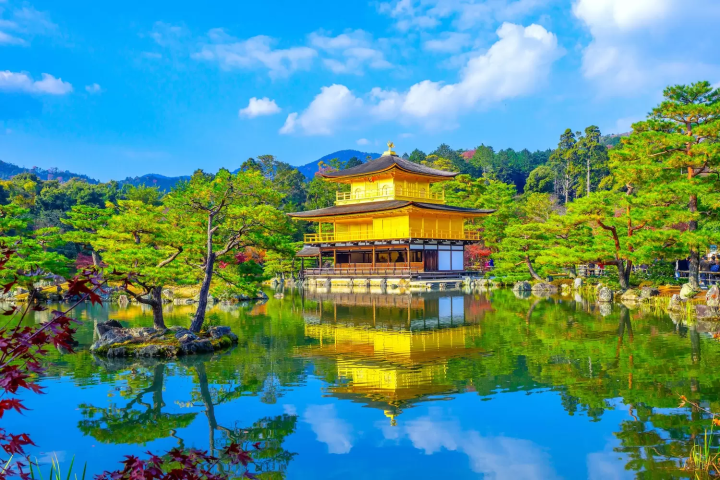
Photo by Pixta
Upon arriving at Kyoto Station we'll take the Karasuma Exit (Kyoto Tower side) and hop on a city bus for Kinkakuji Temple (45-50 minutes).
Although the temple is known in Japan as Kinkakuji from the striking Golden Pavilion (shariden) in the beautiful garden, it's officially named Rokuonji Temple.
After seeing Kinkakuji Temple, a Kyoto landmark, we head for Ryoanji Temple, famous for its rock garden (20-minute walk). Like Kinkakuji, this is also a Zen temple.
Here, wabi sabi is valued, and visitors can enjoy a dry landscape featuring a beautifully maintained rock garden. Please spend some relaxing time here amidst the natural beauty of each season.
Kinkakuji, the Golden Pavilion
Rinzai-sect Zen temple of Shokokuji
Location: Kyoto, Kita, Kinkakujicho 1
Business Hours: 8:40-17:10
Official Homepage: Kinkaku-ji Temple
Day One (Afternoon): Arashiyama
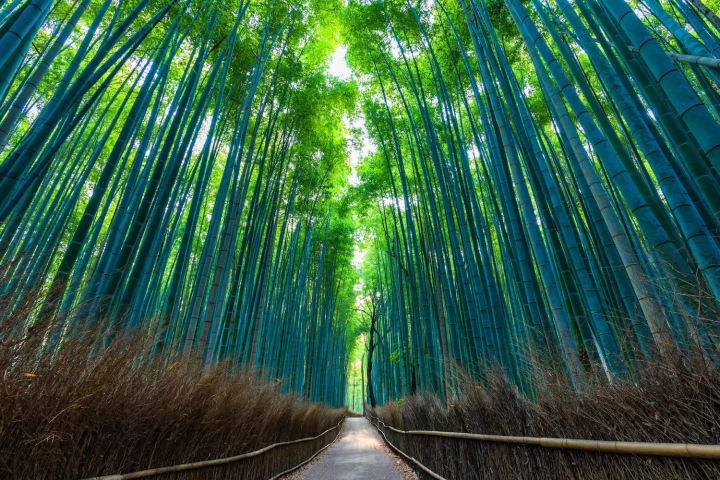
Photo by Pixta
Arashiyama is the biggest sightseeing spot in western Kyoto.
From Ryoan-ji Temple we can walk to Ryoan-ji Station and hop on the Randen Kitano Line. We'll go as far as Katabiranotsuji Station, then transfer to the Arashiyama Main Line and continue on to the final stop, Arashiyama Station.
Arashiyama is famous for the Togetsukyo Bridge which crosses over the Katsura River. In particular, it's known as a spot for enjoying seasonal views including the cherry blossoms in the spring, the lush greenery during the summer, the colorful autumn leaves in the fall, and the snowy scenery in the winter.
Don't miss the Bamboo Forest stretching up towards the sky and the narrow paths running through it. Please also stop in at Tenryuji Temple, a World Heritage Site that's right nearby. While taking a break how about having lunch at Arashiyamatei, a spot famous for its homemade udon noodles?
Day One (Evening): Gion Shijo
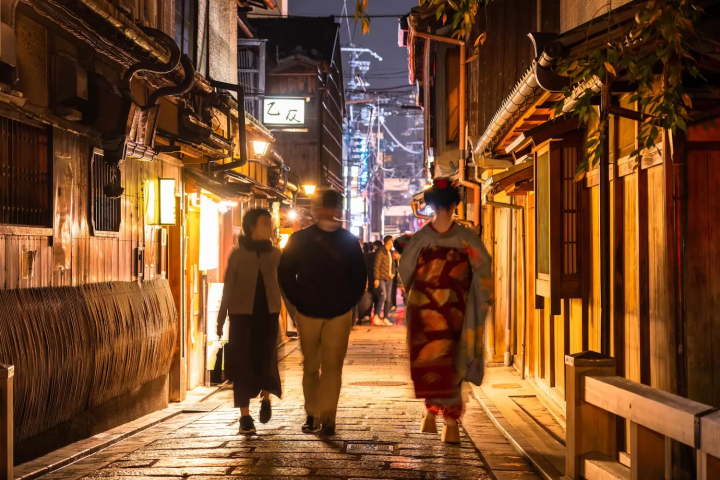
Photo by Pixta
At Arashiyama Station, we board the Hankyu Arashiyama Line / Kyoto Line and return to Kyoto Kawaramachi Station. In the evening we recommend going for a stroll through Gion Shijo to enjoy the old-fashioned streetscapes.
Under the glow of street lamps and shop lights you can enjoy the unique atmosphere of Kyoto's entertainment quarter. If you're lucky, you might see gorgeously dressed maiko (geisha apprentices) and geisha (geiko) walking along Hanamikoji Street. However, please refrain from taking photos in areas where this is prohibited.
Day Two (Morning): Yasaka Shrine and Kiyomizudera Temple
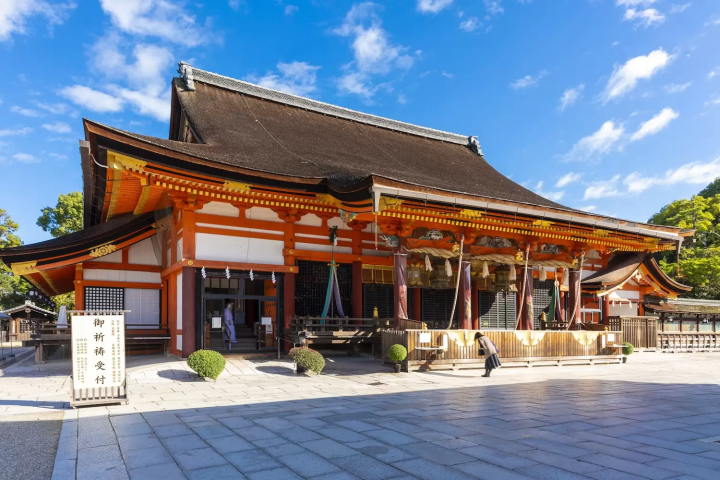
Photo by Pixta
Since ancient times, Yasaka Shrine has been affectionately known as Gion-san by the local residents. It's a leisurely 15-minute walk from Gion-Shijo Station. The shrine is famous for the Gion Festival that's held annually in July, and for many other events throughout the year.
Kiyomizudera Temple
Location: Kyoto, Higashiyama, Kiyomizu 1-294
Business Hours: 2024 Schedule (Hours vary depending on the year)
January 1 - March 22: 6:00 - 18:00
March 23 - 31: 6:00 - 21:30 *Reception closes at 21:00
April 1 - June 30: 6:00 - 18:00
July 1 - August 13: 6:00 - 18:30
August 14 - 16: 6:00 - 21:30 *Reception closes at 21:00
August 17 - 31: 6:00 - 18:30
September 1 - November 17: 6:00 - 18:00
November 18 - 30: 6:00 - 21:30 *Reception closes at 21:00
December 1 - 31: 6:00 - 18:00
Official Homepage: Kiyomizudera Temple
After Yasaka Shrine we'll walk along Sannenzaka and Ninenzaka―where Kyoto's traditional streetscapes continue―on our way to Kiyomizudera Temple.
We recommend the stunning views from the temple's stage, then having lunch nearby. There are many eateries, including shops where you can savor the unique flavor of Kyoto cuisine, as well as sophisticated cafes.
Day Two (Afternoon): Fushimi Inari Taisha Shrine and Kyoto Station
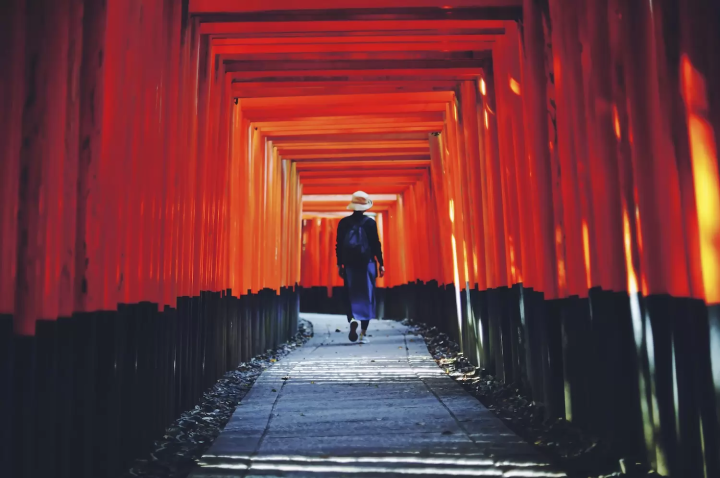
Photo by Pixta
Fushimi Inari Taisha Shrine will be our next stop after Kiyomizudera Temple.
The Keihan Railway at Kiyomizudera-gojo Station will take us directly to Fushimi-Inari Station in just seven minutes. Upon exiting the station, it's only a five-minute walk to reach the approach to Fushimi Inari Taisha Shrine.
After exploring the shrine's main hall (Honden) it'll be a good idea to go and see Senbon Torii, a tunnel of torii gates that's famous as a photogenic spot.
Beyond the torii gates you'll find the Omokaru Stone, which can tell whether the wish you prayed for will come true or not. Please give it a try.
On our return trip we'll be heading to Kyoto Station from JR Inari Station. We can also reach Inari Station from Fushimi Inari Taisha Shrine in about five minutes on foot.
Right up until the shinkansen boarding time, you can go souvenir hunting in the Kyoto Station building and enjoy shopping nearby.
Three-Day Itinerary: Arashiyama, Temples, Shrines, and Food Sampling
If you have three days available, you can see many of Kyoto's main sightseeing spots. Next, we introduce a model itinerary that features the following famous spots.
1. Togetsukyo Bridge and the Bamboo Grove
2. Tenryuji Temple and the Sagano Romantic Train
3. Ninnaji Temple and Ryoanji Temple
4. Kinkakuji and Myoshinji Temple
5. Sannenzaka and Ninenzaka (Near Kiyomizudera Temple)
6. Yasaka Shrine and a Stroll in Gion
Day One (Morning): Togetsukyo Bridge and the Bamboo Grove
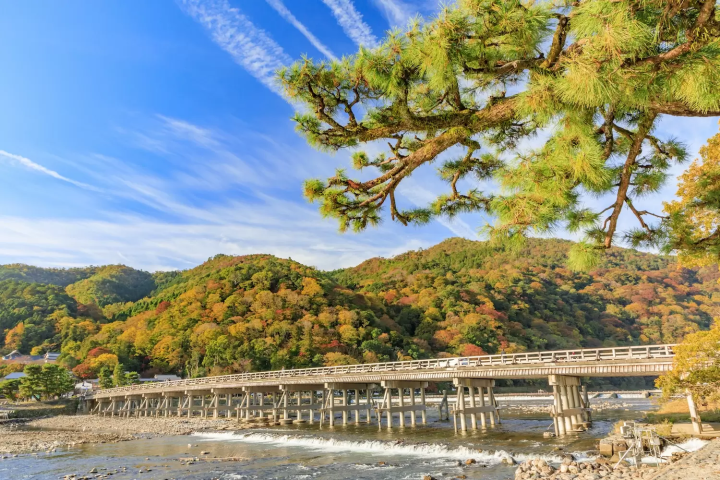
Photo by Pixta
First we'll hop on the JR Sagano Line at Kyoto Station and head for Sagano-Arashiyama Station. After getting off the train it'll be a ten-minute walk to Arashiyama. Then we'll go across the Togetsukyo Bridge, Arashiyama's symbol, and take in the beautiful view of the Katsura River.
As you look out at the surrounding area from the Togetsukyo Bridge, you can see that Kyoto is in a basin surrounded by mountains.
Then afterwards, before it gets crowded with sightseeing visitors, we'll go for a stroll through the Bamboo Grove.
Let's experience the scent of bamboo, the clear air, and the many different views that Arashiyama shows you depending on the time of day and weather. Also don't forget to capture some of these memorable images with your camera!
Day One (Afternoon): Tenryuji Temple and Sagano Romantic Train
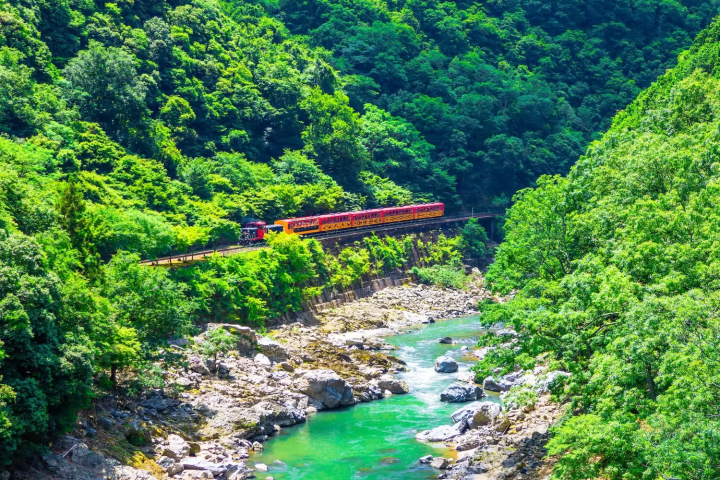
Photo by Pixta
The Arashiyama Station area has many restaurants and also shops ideal for food sampling, so let's have lunch here.
Our recommendation for the afternoon is to visit Tenryuji Temple and then go for a walk in Sogenchi Teien, a strolling pond garden. If you get tired from all the walking, then please hop on the Sagano Romantic Train at Torokko Saga Station and take in the picturesque scenery of the Hozugawa Valley.
No matter what time of the year you visit, you'll be captivated by the colorful beauty of the valley. From Torroko Kameoka Station, the final stop, it's an eight-minute walk to JR Umahori Station. From here we can take a train back to Kyoto Station and arrive in about 25 minutes.
Day Two (Morning): Ninnaji Temple and Ryoanji Temple
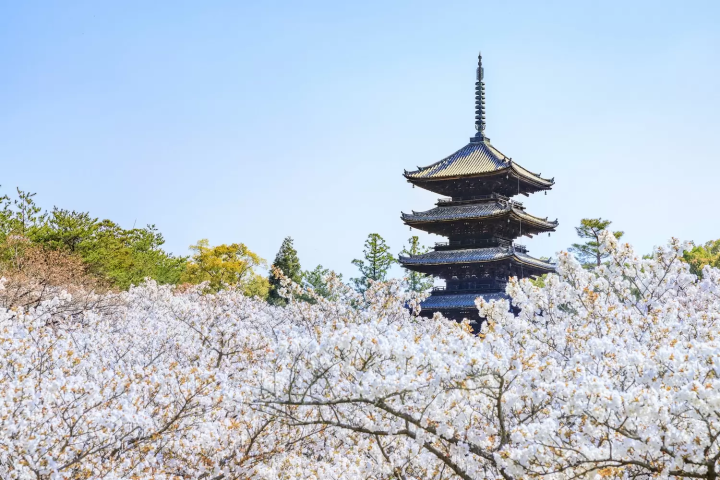
Photo by Pixta
In the morning on the second day we go on a tour of temples and shrines, with a focus on Ninna-ji Temple and Ryoan-ji Temple, both World Cultural Heritage Sites.
First we start at Ninnaji Temple. Located in the northwest part of Kyoto City, this is the head temple for the Omuro school of Shingon Buddhism. At Kyoto Station we board a city bus and then get off at Omuro Ninna-ji bus stop.
The large temple precincts feature many impressive structures that are all worth seeing. These include the Golden Hall, designated a National Treasure of Japan, and a five-story pagoda and Kannon-do that are both registered as Important Cultural Assets. The late blooming cherry trees (Omuro sakura) have been designated as a National Scenic Spot.
Afterwards we'll walk along Kinukake-no-Michi for Ryoanji Temple. It's only ten minutes on foot from Ninna-ji Temple to Ryoan-ji Temple. This road is dotted with many temples and shrines where you can feel the history of Kyoto, so it's a great opportunity to stop in and visit.
Ryoanji Temple was one of the stops during Queen Elizabeth II's official visit to Japan in 1975. After she praised the beauty of the dry landscape rock garden (kare-sansui), the temple became known worldwide.
Day Two (Afternoon): Kinkakuji and Myoshinji Temple
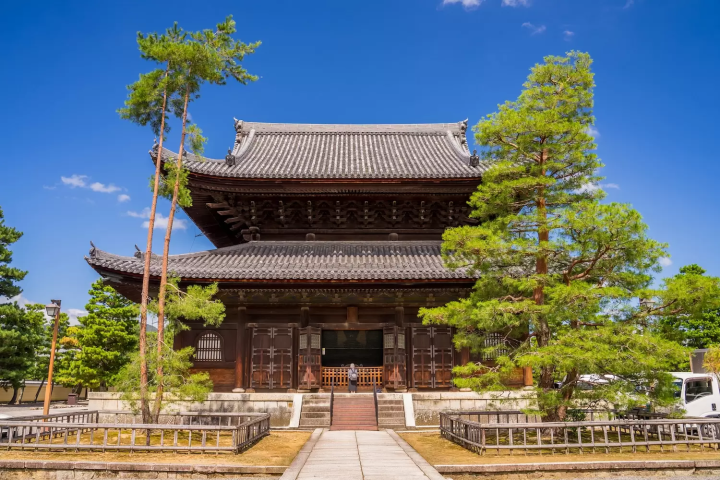
Photo by Pixta
After our visit to Ryoanji Temple, we'll return to Kinukake-no-Michi and head for our next destination, Kinkakuji (20-minute walk).
Along the way you'll see the Kyoto Prefectural Insho-Domoto Museum of Fine Arts with its distinctive exterior, as well as many kinds of restaurants. So before we see the temple let's have lunch nearby.
Dazzling Kinkaku-ji Temple is covered in more gold than you can imagine. So if you have plans to come to Kyoto this is definitely a spot you want to visit. After our enjoyable experience at Kinkakuji, we make our way to Myoshin-ji Temple in Kyoto's Hanazono area.
For visitors with limited time it's best to use the bus and train. For those who want to get there in a more leisurely fashion we recommend going back along Kinukake-no-Michi to Ryoanji Temple. From here there's also a footpath that goes south. It will take you about 15 minutes to get to Myoshinji Temple from here.
Myoshinji Temple is the head temple of the Myoshinji School of Rinzai Zen Buddhism, and is known as the largest Zen temple in Japan.
Make sure to see the ceiling in Myoshinji Temple's Hatto (Lecture Hall). It showcases a masterpiece called Unryuzu (Cloud Dragon) that took artist Kano Tan'yu eight years to paint. The expansive temple precincts―seven times larger than Tokyo Dome―are lined with 46 sub-temples (tacchu).
Day Three (Morning): Sannenzaka and Ninenzaka
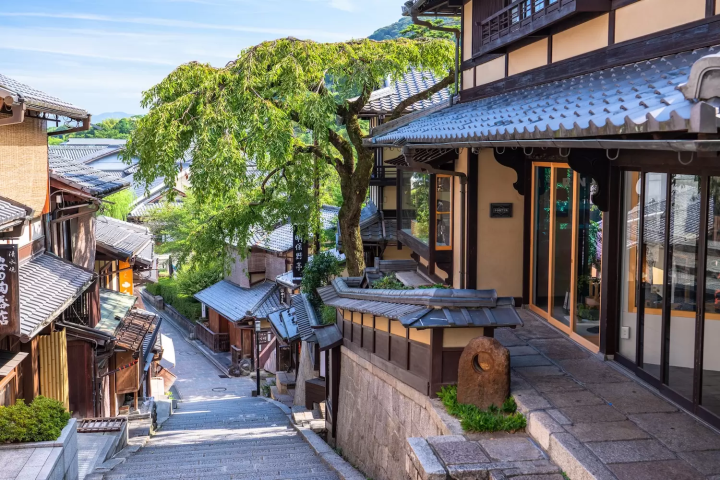
Photo by Pixta
In the morning on Day Three we head for Sannenzaka and Ninenzaka which are part of the approach leading to Kiyomizudera Temple. The cobblestone slopes give the street a uniquely Kyoto atmosphere. Both sides are lined with shops selling souvenirs and other items, so let's enjoy our walk by leisurely browsing through the shops.
If you want to pick up a souvenir that reflects Kyoto we recommend Kyoto pickles (tsukemono), or Japanese confectionery such as yatsuhashi or konpeito. Even if you buy lots of souvenirs you can have them delivered to your home so they won't be a burden on your return trip back.
Day Three (Afternoon): Yasaka Shrine and a Stroll in Gion
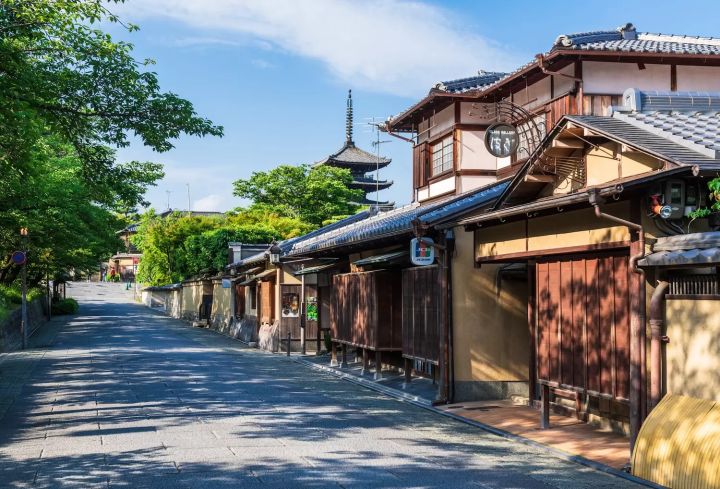
Photo by Pixta
Our three-day Kyoto trip ends with a stroll in the Yasaka Shrine-Gion area after going down Ninenzaka and passing through Nene-no-Michi.
Nene-no-Michi was named after warlord Hideyoshi Toyotomi's wife, Nene (Kita-no-Mandokoro), who spent her later years at Entoku-in Temple along this same street. This is a charming street paved with stones. Sightseeing rickshaws also get pulled along this route by brave rickshaw drivers.
Yasaka Shrine is said to be beneficial for warding off evil and bringing prosperity in business. On the shrine precincts there's also Utsukushi Gosensha, a very popular spot where the Goddess of Beauty is ready to answer your prayers for better looks.
On the final part of our journey let's take a stroll through the historic streets of Gion and enjoy the distinct atmosphere of this Kyoto-style entertainment district.
For travelers who would like to meet geisha (geiko) and maiko (geisha apprentices) we recommend going to the Gion Kagai Art Museum, which opened in May of 2024. Visitors here have permission to take photos (separate fee required).
Frequently Asked Questions
Which Month of the Year Do You Recommend for Visiting Kyoto?
We recommend the cherry blossom season in March-April, and the autumn leaves season from September to November. At these times of the year the weather is also pleasant. However, during these popular seasons there are many visitors, so it's important to book your accommodations as early as possible.
Which Shrines Are Within Walking Distance of Kyoto Station?
Doso-jinja Shrine, Taimatsuden Inari Shrine, and Fumiko Tenmangu Shrine are all located just ten minutes away on foot from Kyoto Station. Also, though it's not a shrine, Higashi Hongan-ji Temple is famous for its portrait of Shinran (founder of Shin Buddhism), and is a 15-minute walk from the station. The Founder's Hall (goeido), where the portrait is housed, is one of the largest wooden structures in the world, and has been designated as a National Important Cultural Property.
Enjoy Kyoto for Half a Day, Two Days, or Three Days!
Kyoto is home to countless sightseeing spots. Even if you plan to only see the most famous ones, you probably won't be able to in a short period of time.
Please use the itineraries in this article as a reference to create your own personal travel plan based on the length of your stay. Then enjoy a memorable trip to Kyoto!
Read also
Main image by Pixta
Written by Kakutama editorial team
This is the official account of MATCHA's editorial department. Our articles feature useful travel information for visitors to Japan, from how-to guides to recommended places to visit.




































![[Next event confirmed! / Report] “Let’s Eat Tokyo Food”](https://resources.matcha-jp.com/resize/720x2000/2025/12/26-254125.webp)
![[Kanazawa] Enjoy the world of gold leaf to the fullest in the city with the highest production volume in Japan](https://resources.matcha-jp.com/resize/720x2000/2025/11/12-249564.webp)
![[2026] Family Winter Trip to Suzuka Circuit! – For Both Day trips and Overnight Stays!](https://resources.matcha-jp.com/resize/720x2000/2025/12/26-254097.webp)
![[Northern Okinawa] 4 Recommended Cosmos Fields in Okinawa | Sunflowers and Cherry Blossoms in the Same Season!](https://resources.matcha-jp.com/resize/720x2000/2024/08/12-192028.webp)
